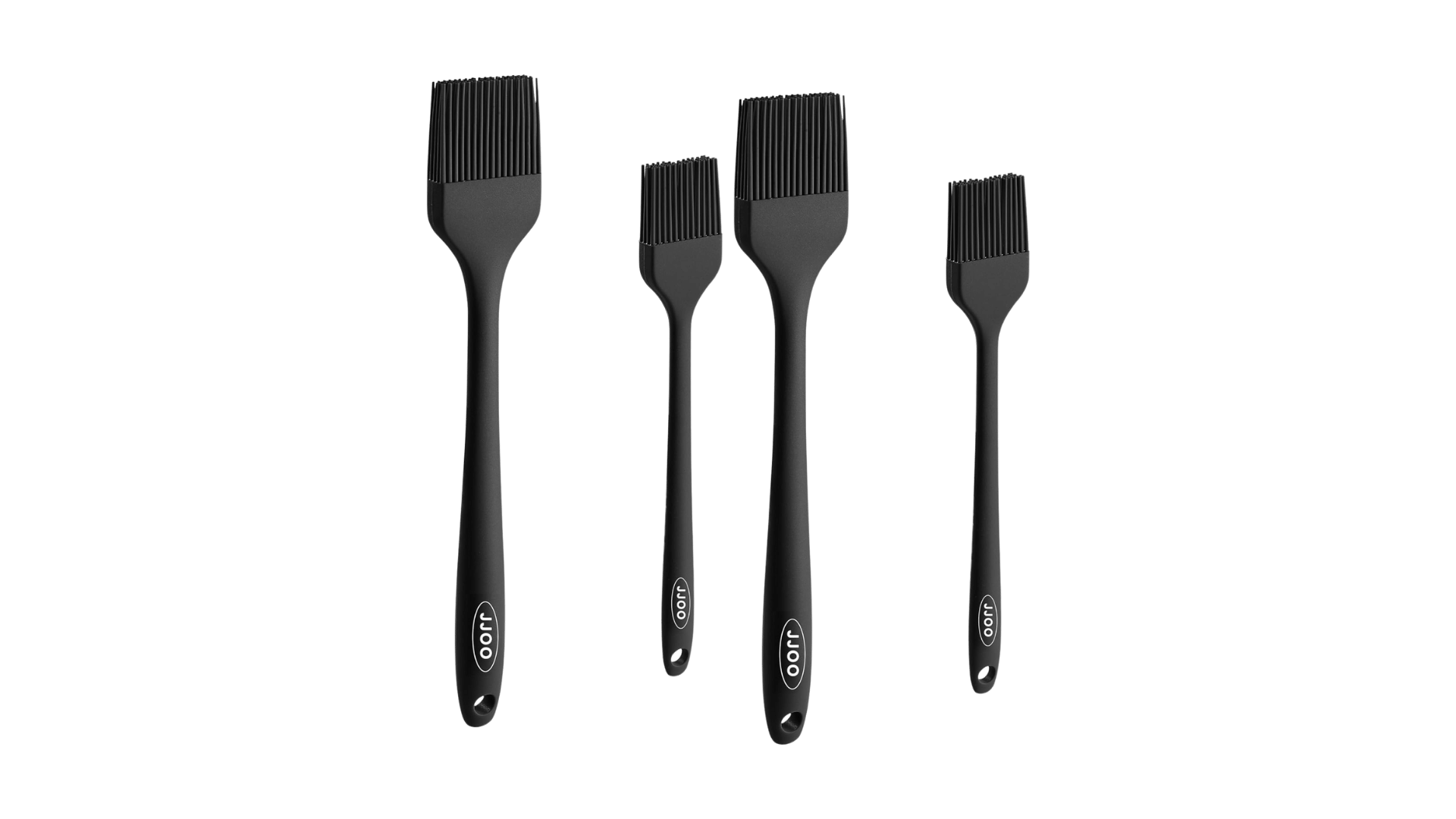
|
This post may contain affiliate links, which means that we may receive a commission if you make a purchase using these links. As an Amazon Associate, we earn commission from qualifying purchases.
Best Basting Brush: A basting brush is a versatile tool used in kitchens around the world for applying marinades, sauces, and glazes to a variety of dishes, from grilled meats to pastries. Selecting the right basting brush can enhance your cooking experience and elevate the flavor and presentation of your culinary creations.
In this guide, we’ll explore the key factors to consider to help you find the perfect basting brush to suit your cooking needs.
Material Types
– Silicone Basting Brushes : Silicone brushes are versatile, heat-resistant, and nonstick, making them suitable for basting hot foods on the grill or in the oven. They are durable, easy to clean, and dishwasher safe, offering flexibility and precision when applying marinades and sauces.
– Natural Bristle Brushes : Natural bristle basting brushes, typically made from boar or hog hair, offer excellent absorption and distribution of liquids, making them ideal for basting delicate meats, poultry, and pastries. They provide a traditional feel and superior coverage but may require more maintenance and care.
– Nylon Bristle Brushes : Nylon brushes are durable, heat-resistant, and easy to clean, making them suitable for basting a wide range of foods. They are nonstick and dishwasher safe, offering precise control and even coverage when applying marinades, sauces, and glazes.
Size and Shape
– Consider the size and shape of the basting brush based on your cooking needs and preferences. Standard basting brushes typically range from 8 to 12 inches in length, with a variety of widths and shapes available to suit different tasks.
– Evaluate the size of the bristles and the width of the brush head, ensuring they are proportionate to the size of the food being basted and provide adequate coverage without excessive dripping or pooling of liquids.
Handle Design
– Look for basting brushes with ergonomic handles or grips that provide a comfortable and secure hold during use. Handles with contoured or textured designs reduce hand fatigue and provide better control and maneuverability when basting foods.
– Consider the material and construction of the handle, opting for heat-resistant materials like silicone or heat-resistant plastics that can withstand high temperatures without melting or warping.
Heat Resistance
– Determine the heat resistance of the basting brush based on your cooking methods and the temperatures involved. Silicone and nylon brushes are heat-resistant and suitable for basting hot foods on the grill or in the oven, while natural bristle brushes may be more sensitive to heat and require careful handling.
– Look for basting brushes with high heat resistance ratings, ensuring they can withstand temperatures up to 500°F or higher without melting or degrading.
Maintenance and Cleaning
– Choose a basting brush that is easy to clean and maintain, with nonstick surfaces or dishwasher-safe materials that facilitate quick and effortless cleanup. Silicone and nylon brushes can be rinsed with soap and water or placed in the dishwasher for hassle-free cleaning.
– Natural bristle brushes require more careful cleaning to prevent bacterial growth and maintain their quality over time. Hand wash them with warm, soapy water and air dry thoroughly to prevent moisture buildup and mold growth.
Versatility and Special Features
– Consider the versatility and special features of the basting brush, such as angled or tapered bristles for precise application, detachable brush heads for easy cleaning, or built-in reservoirs for holding extra marinades or sauces.
– Some basting brushes come with additional accessories or attachments, such as injector needles for injecting marinades into meats or interchangeable brush heads for different types of basting tasks, adding versatility and functionality to your cooking arsenal.
Budget Considerations
– Set a budget based on your preferences and needs, considering factors such as material, size, handle design, and special features. While high-quality basting brushes may be more expensive upfront, they offer superior performance and longevity, making them a worthwhile investment for serious cooks and grillmasters.
Conclusion
Choosing the best basting brush for your kitchen is essential for achieving flavorful and succulent dishes with precision and ease.
By considering factors such as material, size and shape, handle design, heat resistance, maintenance and cleaning, versatility and special features, and budget considerations, you can confidently select the perfect basting brush to suit your cooking needs.
Whether you prefer the versatility of silicone, the traditional feel of natural bristles, or the durability of nylon, the right basting brush will enhance your cooking experience and elevate your culinary creations.
